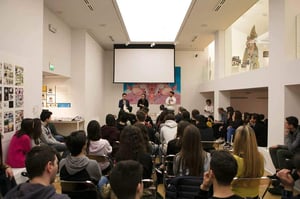According to the scientific journalist Gianluca Dotti, a specialist in uncovering scientific fake news, there are several precautions that we should take every time that we encounter a piece of news (especially if it is shocking) on social media:
1) Remember that what we share on Facebook and Instagram (and any other social media platform) stays there forever. If you “like” a piece of fake news, you contribute to sharing false news and you compromise your reputation.
2) In order to assess the reliability of a piece of news, the number of shares and likes that it has is not a reliable parameter.
3) Highly-emotional content is often fake. All aspects of scientific information must be balanced, from the emotional to the rational.
4) How can you recognize fake news? It is very difficult and there is no magic formula. However, here are several pointers that can help:
- Check the url of the page (fake news is often shared from unknown, foreign websites) and spelling errors (Source: Everday News, The Rebublic, etc.).
- Do a quick online check, entering the key words on Google. You need to make the effort to look inside the article to understand what it is about.
- Go and look at the sources on which the news is based.
5) In order to check if an image is true, you can start by entering the image on Google. The search engine TinEye can also help you, which tells you where the images appear online.
6) Remember that science is not a system of absolute truths: there may be controversial topics, especially in “cutting edge science”. If you find claims that are too peremptory and that are poorly documented, chances are they are not very reliable.
7) Have you ever asked yourself what is the “driver” of fake news? Answer: to invent plausible (but fake) explanations to explain extraordinary events.
8) Finally, a recommendation: when you are faced with certain content, try to open your mind. Always ask yourself who is gaining from it and why this piece of news has been created.

